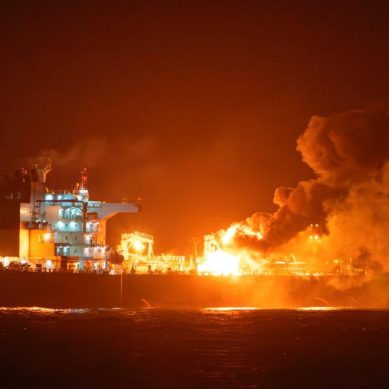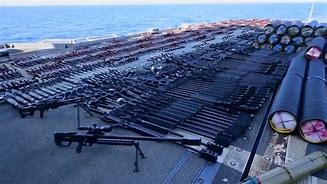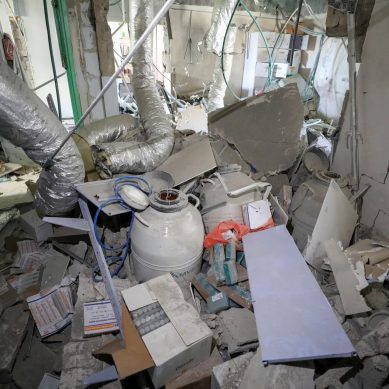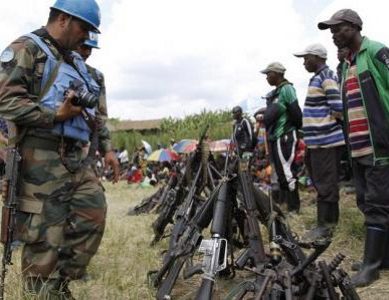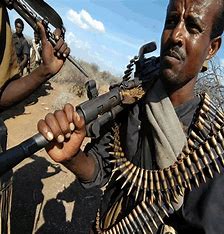
Complicating matters in Ethiopia’s multiple conflicts is the involvement of the Fano, an Amhara militia, in the south, where Oromo Liberation Army (OLA) is on the offensive. Fano claims to be defending Amhara civilians and interests and has launched several attacks into Oromia.
“In my village alone, 37 civilians were killed,” Naol from Nekemte – an urban hub centred on a major road junction – said it was dawn when he awoke to the sound of gunshots.
Three Oromia residents and an official from Oromia’s Kiramu district, close to the border with Amhara, disclosed that Fano fighters have killed ethnic Oromos and torched villages in a series of raids since mid-October.
Lemessa Jabessa, a hotel owner, said his father was wounded by a bullet on November 18 during a raid by what he called “Amhara extremists”. His wife was killed eight days later in a separate attack, he said.
“I told her to take the children to the bush and it was during this that she was hit,” Lemessa said. “In my village alone, 37 civilians were killed.” He added that “many homes, government offices, and [other] properties were burned and looted.”
In total, 214 civilians and 244 members of Oromia’s regional security force were killed in Kiramu between October 15 and December 10, according to a local official, who did not want to be named. They said over 80,000 people were displaced during this period.
The OLA are accused of atrocities too. The Amhara Association of America (AAA), an advocacy group, claims the rebels, Oromo youth and Oromia security forces killed 27 Amhara civilians in Kiramu between late November and mid-December.
Overall, the AAA estimates that at least 1,566 Amhara civilians were killed in Oromia last year. This includes a massacre in Gimbi district in June that saw Oromo-speaking gunmen – identified by residents as OLA – kill hundreds of Amharas.
The OLA is not a new group. It was formed in the 1970s as the armed wing of the Oromo Liberation Front (OLF). The rebels fought the communist Derg regime and maintained a low-level insurgency against the Tigray People’s Liberation Front-dominated regime that came after.
In 2018, the OLF signed a peace deal with Abiy’s government that saw it invited back from exile in Eritrea. But a band of hardline OLA commanders held out, choosing to continue their guerrilla campaign rather than disarm.
Oromo anger at Abiy has aided their cause. Abiy rode to power on a wave of mass Oromo-led protests and his early reforms created “an exaggerated expectation from the youth that all their problems would be solved”, said an analyst of Oromo politics.
“Obviously that was unrealistic, and [the Oromo] were disappointed,” added the analyst, who asked for their name to be withheld, citing a risk of reprisals. The OLA got a further boost in 2020 following the murder by unknown individuals of Hachalu Hundessa, an Oromo pop icon. After Hachalu’s death triggered protests in Oromia, the state cracked down and arrested prominent Oromo figures.
“The major influx of young people into the OLA happened after Hachalu’s death,” said the analyst of Oromo politics. “People were angry and the OLA was portrayed as the champion of the Oromo cause.”
The roots of this cause stretch to the late 19th century, when lowland Oromia was conquered and violently absorbed into the highland empire of Ethiopian emperor Menelik II. To cement his hold on the area, Menelik II introduced armed Amhara settlers to rule on his behalf, and for many Oromo this sense of oppression is still felt today.
Activists claim the Oromo remain insufficiently represented at the highest levels of government and business, despite comprising Ethiopia’s largest ethnic group. Other flashpoints include border disputes with Amhara, allegations of land grabs, and the status of Addis Ababa.
A threat to Addis Ababa?
Though the OLA is gaining strength, its political and military structure is murky. The group is led by a veteran bush fighter known as Jaal Marroo, but it lacks command and control and has voiced no political agenda beyond claiming to fight for the Oromo people.
It is not clear how many fighters are in its ranks, and the rebels are thought to lack heavy weaponry. Analysts therefore caution against overstating its strength and ability to threaten Addis Ababa.
“The OLA does not come close to being what the [Tigrayan rebels are] fighting-wise,” said another analyst, who has deep knowledge of Oromo issues but also did not want to be named. “I don’t think they will ever be in a position to walk into Addis one day; we are talking about guys with AK47s.”
Still, for Buzayehu, the Oromo lawmaker, there remains much to worry about. “People [in Oromia] are dying on a daily basis, but the world is silent,” he said. “We will not keep quiet until peace comes and the suffering of our people ends.”
- The New Humanitarian report
